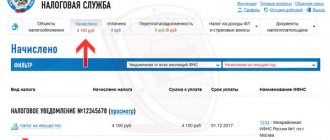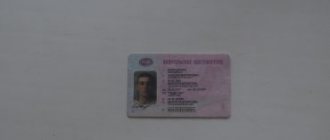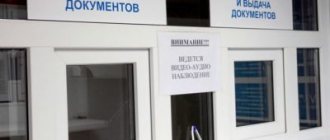How is video recording of violations carried out?
On straight sections of the roadway with an increased risk of accidents, the most frequent cases of drivers exceeding the speed limit, etc. cameras are installed. The devices are used to record unlawful actions of drivers without the participation of traffic police officers.
Advantages of registrars:
- recording all cases of non-compliance with traffic rules;
- exclusion of acts of corruption.
Devices are placed on the roadway so that they can be seen by motorists. A “Video recording” sign is attached nearby.
Recorders record the following traffic violations:
- parking rules;
- order of driving on the side of the road;
- intersections of solid lines, intersections with traffic lights;
- improper overtaking;
- driving into the lane of oncoming traffic;
- speeding on the roadway – error of readings 2 km.
Unlawful actions of motorists are recorded by photographing and recording on video. The camera records not only the moment of the violation, but also the state license plate of the car. Information about the committed act is sent to the relevant Center. Here the owner of the car is found using the license plate number. They issue a penalty and notify the citizen about it.
A little history
The first cameras for video and photo recording of traffic violations were installed almost 15 years ago. Year after year, the innovation gained popularity and by 2014 the number of cameras in the Russian Federation amounted to more than a thousand (and these are only stationary devices).
As for mobile (mobile) systems that perform similar functions, there are several times more of them.
Indeed, such “electronic inspectors” perform well on the road, recording up to a million traffic violations annually. But not all of them turn out to be justified.
In practice, the real culprits are only 50-60%. Other motorists become victims of circumstances.
How long does it take to process information and how long does it take to receive a fine?
Registrars record a large number of violations every day. Information about drivers' non-compliance with traffic rules is transmitted to the traffic police. Here they are processed, after which a decision is made to impose a penalty.
The time limits for consideration of cases of administrative offense are specified in Article 29.6 of the Code of Administrative Offenses of the Russian Federation. In paragraph 1, which was amended by Federal Laws No. 69-FZ of April 30, 2010, No. 307-FZ of October 14, 2014, it is stated that the analysis of information received from technical means that have photo and video recording options, operating in automatic mode, occurs within 15 days.
Algorithm of traffic police officers:
- Studying information.
- Search for car owner by state license plate.
- Drawing up a protocol on the offense committed.
- Entering information about non-compliance with traffic rules into the database.
- Formation of a decree on collection.
After this, the driver is notified of the sanctions through Russian Post.
How to do it?
First, write a statement with a detailed description of the situation, the actual speed and location of the event. If there is evidence from a DVR or navigator, then this is only a plus. Everything is sealed in an envelope and sent to the return address.
Only situations are different.
If the violation occurred in your own city, then everything is simpler here. But what to do if speeding was recorded far from your place of residence?
In such a situation, there are two options:
- Or pay a fine;
- Or collect evidence of your own innocence, get behind the wheel and go to the traffic police department of the city where the violation was committed. This is the only way to restore justice.
There are situations when the camera captured a so-called double car, which has a similar make, color and even license plate.
In such a situation, it is simply necessary to contact the traffic police, because the owner of such a double can do many more things. Naturally, it is pointless to go empty-handed - it is necessary to collect a complete evidence base.
What is the average period between a violation and the arrival of a fine?
Information about the driver’s non-compliance with traffic rules from the recorders is instantly transmitted to the Processing Center. Here the data is processed within 15 days. Based on the information, a resolution is formed. The operator is obliged to send it to the driver within 3 days.
Thus, the total time to receive a notice of collection after the commission of an offense is 18-20 days. The driver has to wait that long for a decision. From this moment on, he is given 1.5 weeks to appeal the decision, 2 months to pay the fine.
It happens that a citizen receives information about sanctions later than 3 days after the decision is issued. This situation arises if a letter with documents is sent by mail. Delivery of correspondence takes up to 3 weeks.
This leads to the following consequences:
- The violator cannot pay the fine with a 50% discount. The amount of the penalty is reduced if the money is transferred to the recipient within 20 days after the decision is made. When the notification arrives late, the citizen is deprived of this opportunity.
- The period for appealing the decision has expired. If this happens, you will have to file a petition to extend the statute of limitations.
To avoid such a situation, you should monitor the imposed penalties.
What should a car enthusiast do?
If you have become one of the “lucky ones” and received a letter of happiness from the traffic police, then the main thing is not to panic.
Remember that such letters cannot just be put in the mailbox - they must be issued only against signature (after all, we are talking about a registered letter).
Some motorists are “cunning” and do not pick up such letters, but this still does not make it possible to evade the need to pay the fine - the deadlines are still running out.
And late payment will sooner or later lead to additional sanctions. Therefore, it is better to accept the letter and sign where it is required.
After this, you need to open the envelope and make sure that the photo card contains your car and your speed.
Today there are situations when the equipment malfunctions for some reason or the person who carried out the mailing made a mistake.
It happens that due to confusion in one number or symbol, the letter came to you.
Naturally, in such a situation there is no need to pay someone else’s fine. The main thing is to write down all the information about your vehicle (number, make, color, etc.) as quickly as possible and send the letter back.
Moreover, the address is available (it is written on the envelope).
How to check fines from cameras yourself
There are several ways to view sanctions. This allows you to choose the appropriate option.
Through State Services
In this case, a registered account is required. It only takes a few minutes to create your personal account. To do this, you need to log in to the site and fill out the form.
To check for penalties, proceed as follows:
Related Posts
Amount of fine for lack of technical inspection in 2021
- Log in to the portal.
- Go to the “Checking fines” section.
- Click the “Fill out application” button. The form contains information about your driver's license and registration certificate.
- Send an appeal.
It takes a few minutes to check collections in the traffic police database, after which the user receives information about existing debts. You can also pay the fine on the website.
Via the official website of the traffic police
To find out if there are penalties in this way, proceed as follows:
- Go to the inspection portal.
- Select the “Check fines” section.
- Enter data about the state registration plate or STS.
- Send a request.
After a few seconds, the system provides information about the presence of debt obligations.
Other options
You can find out about penalties imposed based on data from video cameras in other ways, namely:
- Through the Autocode website. Here is information about fines for unpaid parking. Drivers in the capital can use the portal.
- Via SMS service. To do this, you need to send information about your STS and driver’s license to number 9112. In the response message, the citizen receives information about debt obligations to the traffic police.
- Yandex electronic wallet. Money. To find out if there are fines, go to the website and open the “Traffic Police Fines: Check and Payment” tab. Fill out the form - indicate information about the VU, STS. Press the corresponding button. The system begins searching for debts and provides the necessary information. Here you can make payment. If you subscribe to the newsletter when filling out the application, you will receive timely information about the imposed penalties by email.
- Through the Yandex application. Fines. To do this, the program is downloaded and installed on a mobile device. To check the existence of debt obligations, fill out a form in which you enter the state license plate and registration certificate data. Click the “Check fines” button. You can deposit funds here.
- Through Internet banking. Clients of Sberbank, Tinkoff, etc. can view the availability of penalties. A registered account is required to perform the operation. Log in to the system, find the sanctions check section, enter your driver’s license number, and submit a request.
- Through bailiffs. Information on penalties is presented in the “Bank of Enforcement Proceedings” section. Information does not arrive here immediately after the punishment is imposed, but if the citizen has not repaid the debt within the prescribed period. On the website you can close obligations to avoid blocking bank cards, bans on traveling abroad, etc.
How the system works
Everything is simple here. State traffic inspectors select a section of the road (of course, one with the highest accident rate) and install a special fixing device on it.
The camera can be stationary or mobile, depending on the decision of the relevant authorities.
Using special laser sensors, the speed of an approaching vehicle is recorded and information is recorded on a special memory card.
As soon as a violation occurs, it is recorded. The information received is automatically sent to the analytical center, where the violation is registered and the “chain letter” is sent to the violator by registered mail.
Often, drivers use radar detectors to solve the problem of detecting speeding, but in this situation, this is unlikely to help, since more modern devices for recording violations operate in optical-laser modes simultaneously.
Procedure for challenging fines
The driver is given 10 days after the decision is issued to appeal the decision if he does not agree with the imposed penalty.
To do this, file a complaint stating:
- name of the authority to which the appeal is sent;
- personal data;
- information about the decision made;
- essence of the claim;
- date;
- signature.
Attached to this document:
- protocol;
- identification;
- evidence of innocence.
To challenge a fine, follow the following procedure:
- Form a complaint.
- Collecting documents.
- Contact the traffic police department.
- They are waiting for an answer. 10 days are allotted for this.
If a negative decision is made, the driver has the right to go to court. To do this, they provide a package of documents that is supplied to the traffic police. If the citizen's claim is not satisfied, a fine will have to be paid.
Violation in another country
Today, negotiations are underway with other countries regarding the exchange of letters of happiness from the traffic police, if the violator has managed to “check in” in another country. That is, if a violation occurred, for example, in Belarus, then the letter will still find the violator in Russia and arrive at his place of registration.
If you do not pay the fine on time, entry into Belarus will be prohibited. The list of such “partner” countries today includes Tajikistan, Kyrgyzstan, Kazakhstan, Armenia and others. But in the near future this list will be expanded.











